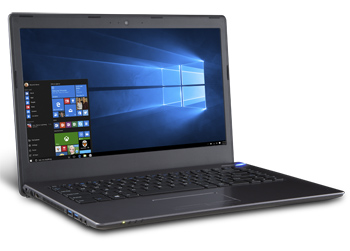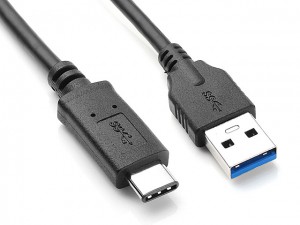Frequently Asked Question
2. USB 3.1 vs. USB Type-C vs. USB 3.0 What’s the difference?
Last Updated 6 years ago
If you’ve been paying attention to the world of USB, you may have heard about USB 3.1 and USB Type-C. But what’s the difference? Which one do you need? And how are they different from USB 3.0 or even 2.0? Let’s break it down.
What is USB Type-C?
Over the years, the USB connection has taken on many forms. The rectangular port you’re most familiar is called USB Type-A. The blocky, almost square port used in many large peripherals like printers is USB Type-B. Add micro and mini versions of each of these into the fold and suddenly you’ve got a half dozen connection type and a recipe for confusion.

 Shopping for a USB Type C Laptop? Check out our Vector 14, starting at just $1149.But now Type-C is here to save the day. USB Type-C is a description of the port connection itself. It’s small, compact, and replaces the standard USB Type-A and B connections as well as the myriad of micro and mini USB ports. Basically, it’s one USB connection type to rule them all. And best of all, it’s reversible, so the days of flipping your USB cable three times before inserting it correctly may finally be numbered. Over the next few years, look for USB Type-C to begin becoming the universal port for all devices including desktop, laptop, and mobile.
Shopping for a USB Type C Laptop? Check out our Vector 14, starting at just $1149.But now Type-C is here to save the day. USB Type-C is a description of the port connection itself. It’s small, compact, and replaces the standard USB Type-A and B connections as well as the myriad of micro and mini USB ports. Basically, it’s one USB connection type to rule them all. And best of all, it’s reversible, so the days of flipping your USB cable three times before inserting it correctly may finally be numbered. Over the next few years, look for USB Type-C to begin becoming the universal port for all devices including desktop, laptop, and mobile.One thing to note, because announcements of Type-C connections have come hand in hand with USB 3.1, many people assume they’re the same, or at the very least that all Type-C runs on the 3.1 spec. This is not the case. Remember, Type-C is the connection type and may actually run on a lesser spec – USB 2.0 even – so don’t assume you’ll be getting all that 3.1 goodness just because you see that tiny reversible port.
What is USB 3.1?
 USB Type-A and a USB Type C side-by-side in harmonyUSB 3.1 (aka USB 3.1/gen 2) is the successor to USB 3.0. Identifiable by its bright turquoise port, USB 3.1 doubles the transfer speed of 3.0 to a whopping 10 Gbps. USB Power Delivery 2.0 makes a big step forward as well with up to 100W of power. And like previous versions of USB, it is fully backwards compatible with its predecessors.
USB Type-A and a USB Type C side-by-side in harmonyUSB 3.1 (aka USB 3.1/gen 2) is the successor to USB 3.0. Identifiable by its bright turquoise port, USB 3.1 doubles the transfer speed of 3.0 to a whopping 10 Gbps. USB Power Delivery 2.0 makes a big step forward as well with up to 100W of power. And like previous versions of USB, it is fully backwards compatible with its predecessors.When used with the Type-C connection, things get really interesting for 3.1. The 100W of PD v2.0 is enough to power and charge full sized notebooks, which means the proprietary AC port may soon be replaced by this universal alternative. With 4 data lanes, USB 3.1 Type-C can even carry DisplayPort and HDMI video signals, further adding to its ubiquity. Again, one port to rule them all.
So what does this mean?
While USB Type-C is definitely on its way, we’re still years away from a total takeover, and even then, the impact will be more on mobile devices and laptops than desktops. A change like this can often take quite a while though, especially with all of the Type-A devices out there.
If you’re ready to try out a USB 3.1 desktop, check out our Raptor Signature Edition, Z95, and Z55.
Click here to review and rate our service
*****************************************
PRIME SYSTEMS
7/211p, Nr Paravathani Furnitures
Nilambur Road
MANJERI - 676 121
Malappuram Dt.
Kerala
Email: mail@primesystems.in
Phone: 0483-2768070, 9495217070Mob. 9895387070
Service : 9895407070, 8129087070